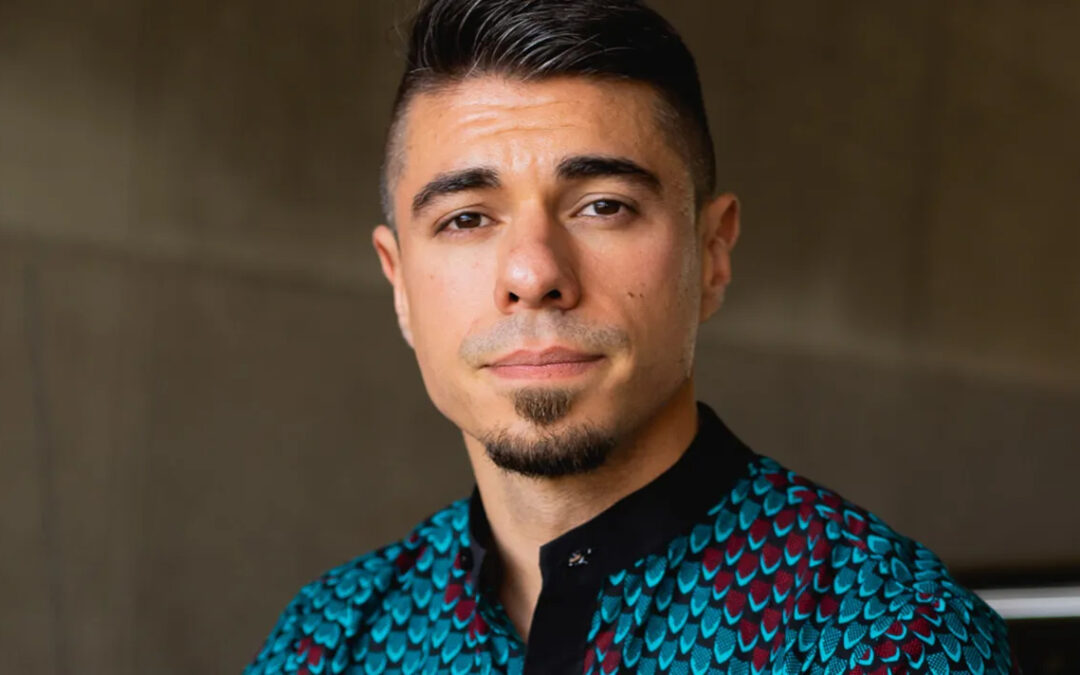From ceramics to glassblowing to black-light photography of colorful flames, fire has long been the animating force behind Carlos Eduardo Gacharná’s art. His ongoing interest in forging and recasting raw materials and light into new forms is closely tied to his preoccupation with migration and identity-making in foreign or hostile places — a perspective that now makes him a deeply empathic teacher and community builder for at-risk youth populations in Los Angeles.
“Carlos Eduardo’s work exemplifies the Wisconsin Idea in bringing art education to communities that might not have as robust programming in their standard curriculum,” says UW assistant professor of glassworking Helen Lee. “His ability to reach students of all ages and all backgrounds is a skill he has honed over years of experience. Carlos Eduardo believes in the power of art to heal, and his work brings this to communities in deep need of this human magic.”
Since 2020, Gacharná has facilitated 450 art workshops, both online and in person, that have served more than 1,000 students across 40 sites in Wisconsin and California.
Born in Bogotá, Colombia, during the peak years of cartel violence, his family emigrated when Gacharná was seven years old. In Colombia, Gacharná was already a budding artist, using Sculpey clay to produce imaginative figures and scenes like tuxedoed polar bears and dolphins living together on tropical islands. But in Wisconsin, Gacharná’s adolescence was marred by culture shock, housing instability, and close calls with law enforcement. By the time he entered high school, Gacharná had switched schools six times.

